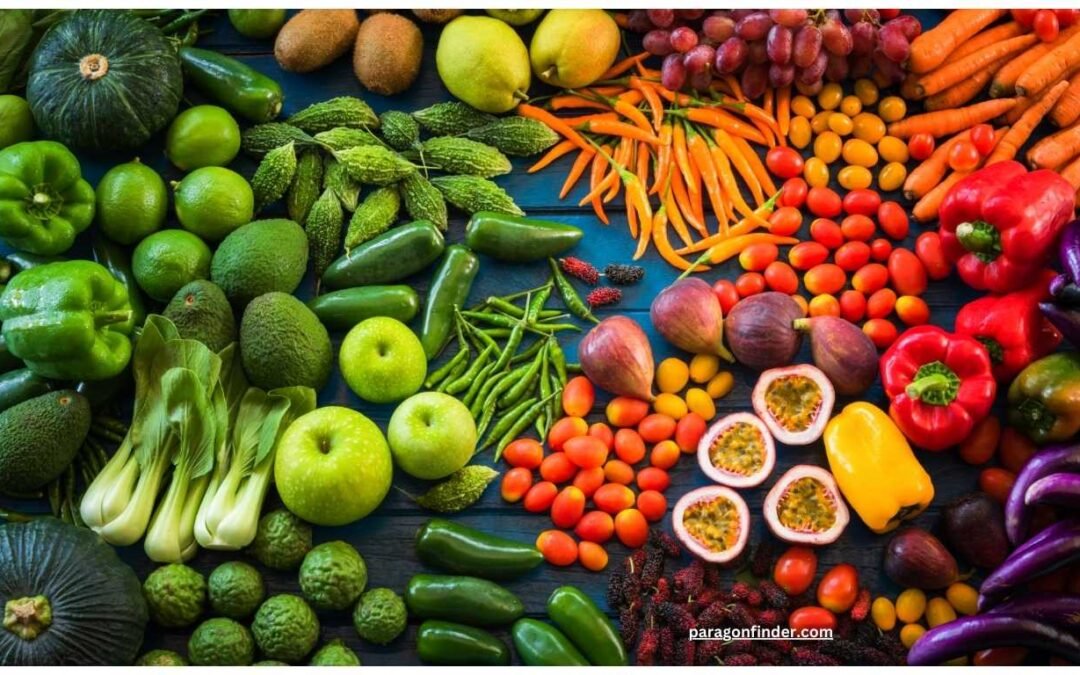
Gardening in a small space can be a delightful and rewarding experience. Whether you have a tiny backyard, a balcony, or even a sunny windowsill, you can still enjoy the benefits of growing your own fresh produce. This article will guide you through the best fruits and vegetables to grow in a small garden, helping you make the most of your limited space and reap a bountiful harvest.
Why Grow Your Own Fruits and Vegetables?
Growing your own fruits and vegetables offers numerous benefits. Not only do you get to enjoy fresh, organic produce, but gardening can also be a therapeutic and stress-relieving activity. Additionally, homegrown fruits and vegetables are often more flavorful and nutritious than store-bought ones. By choosing the best fruits and vegetables to grow in a small garden, you can maximize your yield and enjoy a diverse array of produce.
Best Vegetables for a Small Garden
1. Cherry Tomatoes
Cherry tomatoes are a fantastic choice for small gardens. They are compact, easy to grow, and produce an abundance of sweet, juicy tomatoes. You can grow them in pots, hanging baskets, or even in small garden beds. Choose a sunny spot, and ensure they receive plenty of water and nutrients. With a little care, you’ll be harvesting cherry tomatoes all summer long.
2. Leafy Greens
Leafy greens like lettuce, spinach, and arugula are perfect for small spaces. They grow quickly, don’t require much room, and can be harvested multiple times. You can plant them in containers, window boxes, or small garden beds. Regular harvesting encourages new growth, ensuring a continuous supply of fresh greens for your salads and sandwiches.
3. Radishes
Radishes are one of the quickest and easiest vegetables to grow. They thrive in small spaces and can be planted in containers or directly in the ground. Radishes mature in just a few weeks, making them a great option for impatient gardeners. Plus, their peppery crunch adds a delightful kick to salads and dishes.
4. Carrots
Carrots are another excellent vegetable for small gardens. Choose shorter varieties like ‘Parisian’ or ‘Thumbelina,’ which are well-suited for containers and shallow soil. Carrots prefer loose, well-drained soil and plenty of sunlight. With the right conditions, you’ll be pulling up sweet, crunchy carrots in no time.
5. Peppers
Peppers, both sweet and hot, can be grown in small gardens with ease. They thrive in containers and need plenty of sunlight and warmth. By choosing compact varieties like ‘Mini Bell’ or ‘Jalapeno,’ you can enjoy a colorful and spicy harvest without taking up too much space. Peppers are also great for adding flavor to a variety of dishes.
Best Fruits for a Small Garden
1. Strawberries
Strawberries are an ideal fruit for small gardens. They can be grown in hanging baskets, containers, or even vertical planters, making them perfect for limited spaces. Strawberries need plenty of sunlight and well-drained soil. With regular watering and a little care, you’ll enjoy sweet, juicy strawberries throughout the growing season.
2. Blueberries
Blueberries are a compact fruit that can be grown in containers or small garden beds. They require acidic soil, so consider using a soil mix specifically designed for acid-loving plants. Blueberries need full sun and regular watering. With proper care, you’ll have a bountiful harvest of delicious, antioxidant-rich berries.
3. Raspberries
Raspberries are another excellent choice for small gardens. They can be grown in containers or against a sunny wall or fence. Raspberries need well-drained soil and consistent watering. Choose dwarf or compact varieties to save space. Fresh raspberries are a delightful treat, perfect for snacking or adding to desserts.
4. Dwarf Fruit Trees
Dwarf fruit trees are specially bred to stay small, making them perfect for small gardens. Varieties like dwarf apple, peach, or citrus trees can be grown in containers or small garden plots. They require full sun and regular care, but the reward is a harvest of delicious, homegrown fruit. Dwarf trees are a great way to enjoy tree fruits without needing a large yard.
5. Grapes
Grapes can be grown in small gardens by training them to grow vertically on trellises or arbors. They need full sun and well-drained soil. Grapes require regular pruning to keep them manageable and productive. With the right care, you’ll enjoy clusters of sweet, juicy grapes that are perfect for snacking or making homemade jam.
Personal Tips for Success
Utilize Vertical Space
One of the best ways to maximize your small garden is by using vertical space. Grow climbing plants like beans, peas, and cucumbers on trellises or fences. Use hanging baskets for strawberries and other trailing plants. Vertical gardening not only saves space but also creates a lush and productive garden.
Succession Planting
Practice succession planting to make the most of your garden space. Once one crop is harvested, plant another in its place. For example, after harvesting radishes, plant carrots or lettuce. This ensures a continuous supply of fresh produce throughout the growing season.
Companion Planting
Companion planting is a great way to optimize your small garden. Some plants grow better together and can help deter pests or improve growth. For example, plant basil near tomatoes to enhance their flavor and deter pests. Marigolds are excellent companions for many vegetables as they repel harmful insects.
Regular Maintenance
Regular maintenance is key to a successful small garden. Water your plants consistently, especially those in containers, as they can dry out quickly. Fertilize regularly to provide essential nutrients. Keep an eye out for pests and diseases, and address any issues promptly. Regular pruning and harvesting will keep your plants healthy and productive.
Enjoy the Process
Gardening in a small space can be incredibly rewarding. Take the time to enjoy the process and experiment with different plants. Each garden is unique, and finding the best fruits and vegetables to grow in a small garden can be a fun and educational experience. Don’t be afraid to try new varieties and techniques to see what works best for your space.
Conclusion
Growing the best fruits and vegetables in a small garden is not only possible but also highly rewarding. By choosing compact and productive varieties, utilizing vertical space, and practicing good garden maintenance, you can enjoy a bountiful harvest of fresh, homegrown produce. Whether you’re growing cherry tomatoes on your balcony or strawberries in hanging baskets, the joy of gardening and the satisfaction of eating your own fruits and vegetables make it all worthwhile. Happy gardening!

